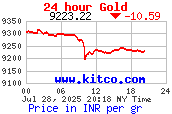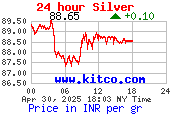Warren Buffett: How He Does It
Did you know that a $10,000 investment in Berkshire Hathaway in 1965, when Warren Buffett took control of it, grew to be worth over $50 million by 2003? By comparison, $10,000 in the S&P 500 would have grown to only $500,000. Whether you like him or not, Buffett's investment strategy, known as value investing, has been one of the most successful ever. Here we look at how Buffett amassed this fortune solely from investing.
What Is the Buffett Investing Philosophy?
Value investing looks for stocks whose prices are low for their companies' supposed intrinsic worth, which is determined by an analysis of certain characteristics and fundamentals of companies. Mirroring the mentality and shopping style of a bargain hunter, value investors looks for products that are beneficial and high quality but cheap in price. In other words, the value investor searches for stocks that he or she believes are undervalued by the market. Like the bargain hunter, the value investor tries to find those items that are valuable but not quite recognized as such by the majority of other buyers.
Warren Buffett takes this value investing approach to another level. Many value investors aren't supporters of the Efficient Market Hypothesis but trust that the market will eventually properly start to favor those quality stocks that were, for a time, undervalued. Buffett, however, doesn't think in these terms. He isn't concerned with the supply and demand intricacies of the stock market. In fact, he is not really concerned with the activities of the stock market at all. He chooses stocks solely on the basis of their overall potential as companies--he looks at each company as a whole. Holding these stocks for the extended long term, Warren Buffett seeks not capital gain but ownership in quality companies that are highly capable of generating earnings. When Warren Buffett invests in a company, he is not concerned whether the market will eventually recognize the company's worth; he is concerned with how well that company can make money as a business.
So How Does Buffett Find Low-Priced Value?
Here we look at some of the questions that Buffett asks himself when he evaluates the relationship between a stock's level of excellence and its price. Keep in mind that these are not the only things that he analyzes:
1. Has the company consistently performed well?
Sometimes ROE is referred to as "stockholder's return on investment." It tells the rate at which shareholders are earning income on their shares. Warren Buffett always looks at the return on equity (ROE) to see whether or not a company has consistently performed well in comparison to other companies within the same industry. ROE is calculated as follows:
= Net Income / Shareholder's Equity
Just having a high ROE last year isn't enough. The investor should view the ROE from the past five to ten years to get a good idea of the historical growth.
2. Has the company avoided excess debt?
The debt/equity ratio is another key characteristic that Warren Buffett carefully considers. Buffett prefers to see a very small amount of debt, which means earnings growth is being generated from shareholders' equity. The debt/equity ratio is calculated as follows:
= Total Liabilities / Shareholders' Equity
This ratio indicates the proportion of equity and debt the company is using to finance its assets, and the higher the ratio, the more debt--rather than equity--is financing the company. A high level of debt compared to equity can result in volatile earnings and large interest expenses. For a more stringent test, investors sometimes use only long-term debt instead of total liabilities.
3. Are profit margins high? Are they increasing?
The profitability of a company depends not only on having a good profit margin but also on consistently increasing this profit margin. This margin is calculated by dividing net income by net sales. To get a good indication of historical profit margins, investors should look back at least five years. A high profit margin indicates that the company is executing its business well, but increasing margins means that management has been extremely efficient and successful at controlling expenses.
4. How long has the company been public?
Buffett typically considers only companies that have been around for at least ten years. As a result most of the technology companies that have had their IPOs in the past decade wouldn't get on Mr. Buffett's radar. It makes sense that one of Buffet's criteria is longevity: value investing means looking at companies that have stood the test of time but are currently undervalued. Never underestimate the value of historical performance, which demonstrates the company's ability (or inability) to increase shareholder earnings. Do keep in mind, however, that the past performance of a stock does not guarantee future performance--the job of the value investor is to determine how well we can trust that the company has a capacity to perform as well as it did in the past.
5. Do the company's products rely on a commodity?
Initially you might think of this as a radical approach to narrowing down a company, but Buffett tends to shy away (but not always) from companies whose products are indistinguishable from competitors, and those that rely solely on a commodity such as oil and gas. He does not put his money into companies that rely on the price of an underlying commodity. If the company does not offer anything different than another firm within the same industry, be wary as a value investor.
6. Is the stock selling at a 25 percent discount to its real value?
This is the kicker. Finding companies that meet the other five criteria is one thing, but determining whether they are undervalued is the key for value investing, and finding a company that is trading at a 25 percent discount is not always easy. To check this, we must determine the intrinsic value of a company by analyzing a number of business fundamentals, including earnings, revenues, and assets. A company's intrinsic value is usually higher than its liquidation value, which is what a company would be worth if it were broken up and sold today--the liquidation value doesn't include intangibles such as the value of a brand name, which is not directly stated on the financial statements.
Once Buffett determines this intrinsic value of the company as a whole, he compares it to its current market capitalization, which is the current total worth (price) of the entire company. If his measurement of intrinsic value is at least 25 percent higher than the company's market capitalization, Warren Buffett sees the company as one that has value. Sounds easy, doesn't it? Well, Buffett's success, however, depends on his unmatched skill in accurately determining this intrinsic value. While we can outline some of his criteria, we certainly have no way of knowing exactly how he gained such precise mastery over calculating value.
Conclusion
Well, as you have probably noticed, Warren Buffett's investing style, like the shopping style of the bargain hunter, reflects a practical, down-to-earth attitude. This attitude Buffett maintains toward also his lifestyle and overall philosophy on life: he doesn't live in a huge house, he doesn't collect cars, and he doesn't take a limousine to work. The value-investing style is not without its critics, but whether you support Buffett or not, the proof is in the pudding. As of 2003, he holds the title of the second richest man in the world, with a net worth of over $30 billion (Forbes 2003). If you choose to practice this kind of investing style, keep in mind that it takes time to do the proper analysis and to get good at it





















